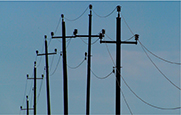CHAPTER 16 Assessment
Reviewing Content
Choose the letter that best answers the question or completes the statement.
When a drill is used to bore a hole in an object,
no useful work is done.
no energy is lost due to friction.
the drill is 100 percent efficient.
friction causes the object to heat up.
Why does liquid rise in a thermometer?
convection
thermal expansion
condensation
radiation
To heat 1 g of water by 1°C requires
1 calorie.
1 Calorie.
1 joule.
1 watt.
The best thermal insulators
conduct heat well.
are gases.
are metals.
have free electrons.
A blow dryer transfers thermal energy mainly by
conduction.
convection.
radiation.
specific heat.
Which statement is NOT true about radiation?
All objects radiate.
Hot objects radiate faster than cold objects.
Radiation only transfers energy in matter.
The sun's energy reaches Earth by radiation.
Energy added to a system
does work or increases thermal energy.
cannot heat the environment.
is converted to radiation.
reduces the kinetic energy of the system.
All engines operate at less than 100 percent efficiency because they
absorb heat.
conduct heat.
burn gasoline.
emit heat.
Which occurs just before ignition?
intake stroke
compression stroke
exhaust stroke
power stroke
Which of the following is a FALSE statement about a heat pump?
It requires no work.
It moves heat from a cold to a hot area.
It uses a refrigerant.
Air conditioners are heat pumps.
Understanding Concepts
In what direction does heat flow? Why do particles of matter transfer thermal energy in this direction?
How can one object feel warmer than another object if the two objects are at the same temperature?
Why does a balloon filled with air expand when it is heated?
Power lines sag more between telephone poles in summer than in winter. Explain why this is so.

Why does a piece of steel heat up more than an equal mass of plastic when both absorb the same energy?
In a calorimeter, what determines how much energy is absorbed by the water?
Why are metals generally good thermal conductors?
How does sunlight reach an astronaut on the International Space Station?
How can the efficiency of a heat engine be improved?
What is waste heat?
What is the most important difference between an internal combustion engine and an external combustion engine?
Why does a heat pump need an external source of energy (such as electrical energy)?
Describe convection in a room heated by a radiator.




